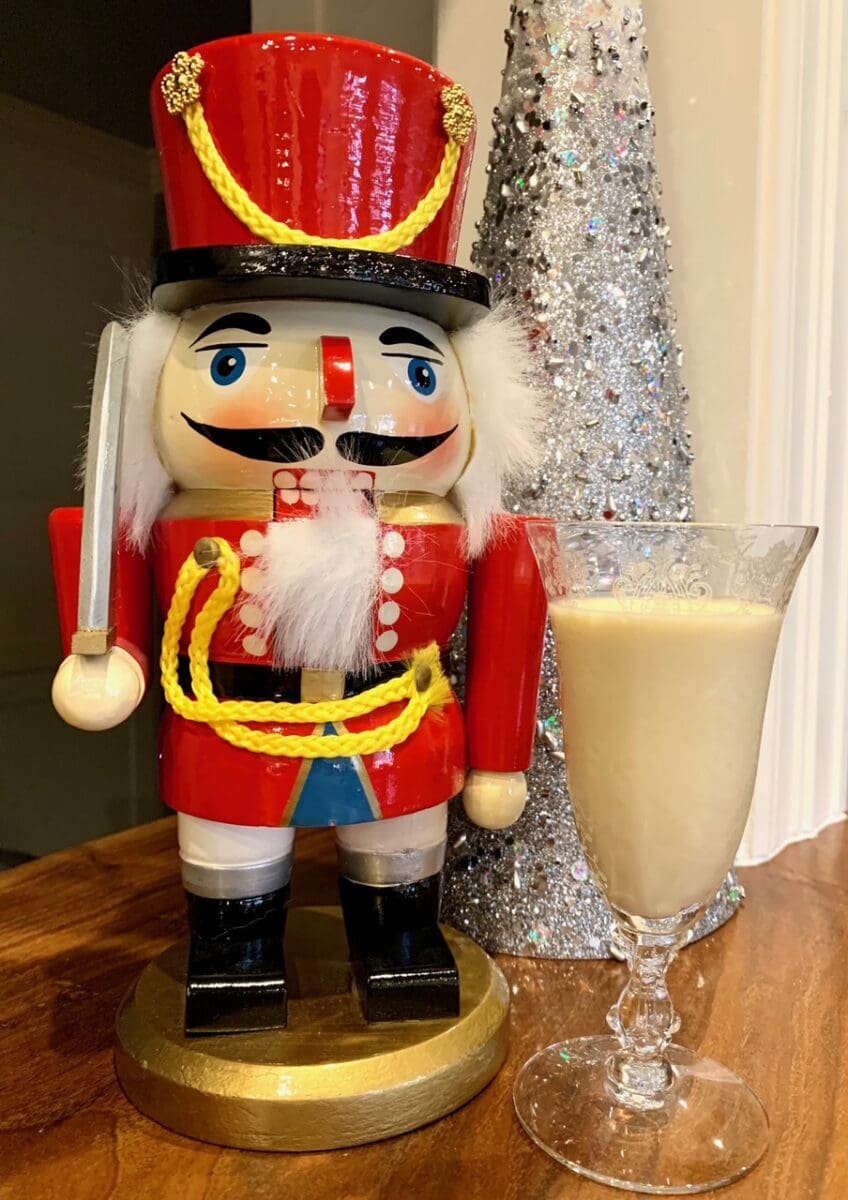
Store-bought, mass-produced holiday eggnog never really won me over—it was all I knew, but it always left something to be desired. That all changed when I discovered the rich, velvety magic of homemade eggnog, thanks to my friends Jaime and Mark. Their recipe, perfected through years of trial, error, and experimentation, is a true labor of love. They’ve done the hard work, saving us from costly mistakes and ensuring a flawless result. Why reinvent the wheel when theirs is already perfectly round?
That said, I couldn’t resist adding my own twist. I swapped in a wheated bourbon, and the result was nothing short of spectacular.
Origins
Most culinary historians trace the origins of eggnog back to medieval Britain, where it began as a drink called “posset.” This early version was a rich blend of milk, eggs, and sherry, often served during celebratory occasions. While some speculate that the name “eggnog” might stem from its association with grog (a mixture of rum and water) and wooden cups known as noggins—hence, “grog-nog”—there’s no definitive answer on how the name came to be. Regardless of its etymology, eggnog has become a timeless holiday tradition.
Holiday Eggnog Matrix
The key to truly delicious holiday eggnog lies in using fresh ingredients and customizing it to suit your personal taste. The choice of brandies and whiskies allows you to fine-tune the flavor and mouthfeel, ranging from smooth and mild to bold and spicy. Another factor to consider is the proof of the bourbon or whiskey—higher proof spirits bring a spicier, more robust character to the mix.
For the mildest and smoothest eggnog, opt for cognac and wheated bourbon. Cognac’s lower proof and gentle flavor, paired with the famously smooth wheated bourbon, create a silky, approachable profile. On the other end of the spectrum, rye whiskey delivers a signature spiciness, and when combined with a high-proof Armagnac or brandy, you’ll have a more liquor-forward, intensely flavored eggnog.
If you enjoy experimenting, think of your ingredients as part of a flavor matrix. Adjust the spirits and ratios until you find the perfect balance—one that makes the angels sing. The beauty of homemade eggnog is its adaptability, so don’t be afraid to make it your own.
Smoother to Spicier:
Cognac – Armagnac – Brandy
Wheated Bourbon – Rye Bourbon – Rye Whiskey
45% ABV – 50% ABV – 55%+ABV
Home-Made vs. Commercial
Let’s revisit why store-bought eggnog often falls short of expectations. The FDA allows products to be labeled as “eggnog” with as little as 1% egg yolk. Add to that a minimal amount of alcohol—both in quality and quantity—and it’s no wonder these versions lack the richness and depth of flavor that make homemade eggnog so special.
That said, let’s not pretend eggnog is guilt-free. A single cup can pack nearly as many calories as a Big Mac. But hey, it’s the holidays! Raise your glass, savor the indulgence, and cheers to the season.
Let’s Make Holiday Eggnog!

Scald the milk and while it is heating whisk together the eggs and milk. Add the milk to the eggs in a slow stream, whisking constantly. When combined pour it into a large saucepot.

Cook on lowest heat while stirring in a figure-8 motion for 5 minutes. Do not overcook to avoid scrambled eggs. Strain the mixture through a fine mesh sieve into a large bowl, then stir in the cream, then the liquors and vanilla. Let it cool uncovered, then package in quart jars and refrigerate overnight. Shake well before serving.
Holiday Eggnog
Home-made eggnog with bourbon, cognac, eggs, milk and cream
- Prep Time: 10
- Cook Time: 20
- Total Time: 30 minutes
- Yield: 7-8 cups 1x
Ingredients
- 7 large whole eggs
- 3 cups whole milk
- 1 cup sugar
- 1/3 cup Pierre Ferrand cognac
- 2 cups heavy cream
- 1/3 cup original Maker’s Mark wheated bourbon
- 1 tsp vanilla
Instructions
- Scald the milk (just short of a boil) in a saucepot
- Use a heatproof bowl to whisk the eggs until smooth, then add the sugar and continue whisking until fully incorporated
- Add the milk in a very slow stream, whisking continuously as you go
- Pour the mixture in a large saucepan and cook on lowest heat for five minutes, stirring continuously with a figure-8 motion. Do not cook longer than 5 minutes to avoid scrambled eggs!
- Strain the custard with a fine mesh sieve into a large bowl
- Stir in the cream, then liquors and vanilla
- Allow to cool completely – uncovered, then store in quart jars and refrigerate overnight. There will be some separation overnight, so shake or stir to re-incorporate all the ingredients before serving
Notes
Special thanks to Jaime Hall and Mark Burnett – Life Around The Bases


